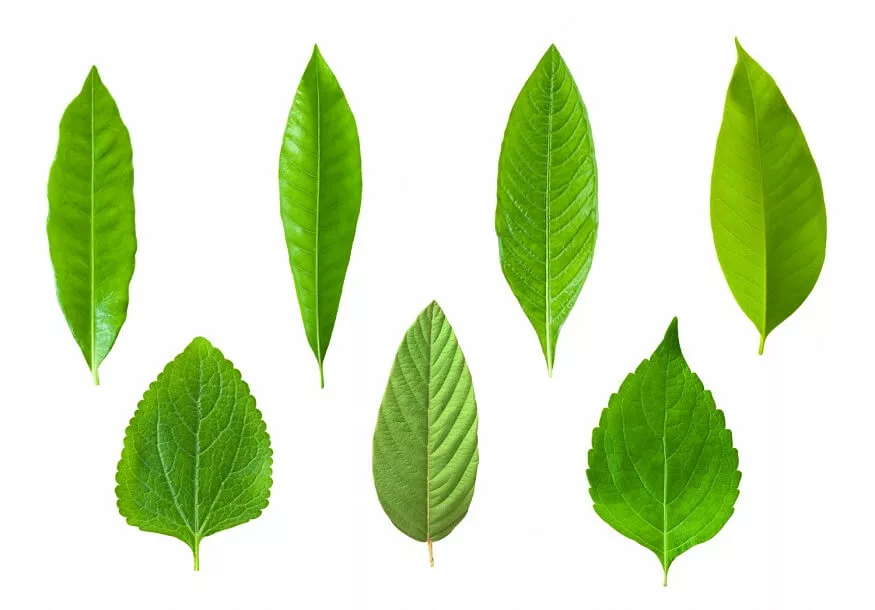In the vibrant world of kindergarten, where curiosity blooms as brightly as the flowers in spring, exploring nature becomes a magical journey of discovery. Embracing the simplicity of leaves, their shapes, and textures provides an engaging and hands-on learning experience for young minds. In this article by EuroSchool, we embark on an imaginative expedition, experimenting with various leaf shapes and textures with kindergarten students, igniting their fascination for the wonders of the natural world.
Teaching Leaf Shapes To Preschoolers
- Simple Leaf Shapes: Begin the exploration by introducing kindergarten students to the diverse world of leaf shapes. From the heart-shaped leaves of the sweetgum tree to the round, simple leaves of the cherry blossom, each leaf carries a unique identity.
- Heart-Shaped Leaves: The sweetgum tree boasts leaves resembling hearts, an enchanting shape that captures the imagination of young learners.
- Round Leaves: Explore the simplicity of round leaves, such as those found on cherry blossom trees. These are excellent for introducing basic shapes.
- Compound Leaf Structures: Move beyond simplicity and delve into the intriguing world of compound leaves. These leaves are composed of multiple leaflets, fostering a deeper understanding of the complexity found in nature.
- Pinnate Compound Leaves: The ash tree features pinnate compound leaves, where leaflets are arranged along a central stem, resembling a feather.
- Palmate Compound Leaves: Maple trees showcase palmate compound leaves, with leaflets radiating from a single point, resembling the fingers of a hand.
Also Read: STEM activities for kindergarten: How do you introduce STEMS lessons
Teaching Leaf Textures To Preschoolers
- Smooth and Waxy Surfaces: Encourage students to feel the smooth, waxy surfaces of leaves such as those found on magnolia trees. This tactile experience engages their sense of touch, creating a multisensory connection to nature.
- Magnolia Leaves: Magnolia leaves are not only smooth but also boast a glossy texture, providing an opportunity to discuss the protective coatings on leaves.
- Rough and Jagged Edges: Explore leaves with rough or jagged edges, such as those on oak trees. These textures add an element of diversity, prompting discussions on the adaptability of plants.
- Oak Leaves: Oak leaves are characterised by their jagged edges, offering a textural contrast to smoother varieties.
- Fuzzy and Velvety Textures: Introduce the concept of fuzziness or velvety textures found in leaves like lamb’s ear. This texture not only engages the sense of touch but also sparks discussions on adaptations for different environments.
- Lamb’s Ear Leaves: The soft, fuzzy texture of lamb’s ear leaves provides a delightful tactile experience.
Also Read: 20 Fun Birds Activities for Kindergarten Children
Hands-On Leaf Activities For Kindergarten Kids
Here are some hands-on leaf activities that not only enhance fine motor skills but also cultivates a love for learning in our kindergarten adventurers.
Leaf Rubbings
Engage students in the enchanting art of leaf rubbings. Place leaves under a sheet of paper and encourage children to rub crayons gently over the paper, revealing the intricate details of the leaves. Explore patterns, shapes, and textures revealed in the leaf rubbings. Discuss how the veins and edges of the leaves become visible through this creative process.
Sorting and Classifying
Transform the classroom into a natural sorting ground. Provide a variety of leaves and invite students to sort and classify them based on shape, size, or texture.
- Sorting by Shape: Create categories for leaves based on shapes – heart-shaped, round, palmate, pinnate, etc.
- Sorting by Texture: Explore textures by categorising leaves into groups such as smooth, rough, fuzzy, or velvety.
Leaf Art Collage
Encourage the budding artists to create leaf collages. Provide glue, paper, and an assortment of leaves for students to arrange into unique artistic compositions.
- Creativity Unleashed: Discuss the variety of arrangements and compositions, allowing children to express their creativity through the assemblage of leaves.
- Outdoor Adventures: Taking Learning Beyond the Classroom
Nature Walks and Leaf Hunts
Extend the learning experience beyond the classroom with nature walks and leaf hunts. Explore the school grounds or nearby parks, collecting leaves for further exploration back in the classroom. Introduce the concept of field journals, where students can document their findings, draw sketches, or describe the leaves they discover.
Seasonal Changes and Leaf Observations
Connect the exploration to the changing seasons. Discuss how leaves change colours in autumn, and encourage students to observe these transformations over the course of the school year. Create a leaf colour wheel, showcasing the various hues leaves can take on during different seasons.
Also Read: Interesting Kindergarten Science Activities Experiments
Educational Outcomes: Nurturing Curiosity and Understanding
Here are some educational outcomes to nurture curiosity and understanding with leaf shapes with preschoolers
- Scientific Inquiry: Through hands-on activities, kindergarten students engage in scientific inquiry, observing, touching, and sorting leaves to better understand the natural world.
- Asking Questions: Encourage children to ask questions about what they observe – why are some leaves smooth, and others jagged? Why do leaves change colour?
- Sensory Exploration: By touching and feeling different leaf textures, students stimulate their sensory perception, fostering a holistic understanding of the environment around them.
- Engaging Senses: Discuss the importance of senses in exploring the natural world. How do leaves feel under their fingers, and what does that tell them about the plant?
- Creativity and Expression: Leaf-related art activities allow for creative expression, helping students develop fine motor skills while expressing their unique perspectives.
- Artistic Choices: Discuss the artistic choices students make during leaf art activities. What colours do they choose, and how do they arrange the leaves in their collages?
Also Read: Exciting Calendar Games for Kindergarten That Will Delight Children
In the kindergarten classroom, exploring leaf shapes and textures is not just a lesson; it is a gateway to a lifelong appreciation for the beauty and diversity found in nature. Through hands-on activities, outdoor adventures, and creative expressions, young minds are not just learning about leaves – they are cultivating a profound connection with the world around them.
EuroSchool teachers guide these early explorations, they become stewards of a magical journey, nurturing not only the intellect but also the innate sense of wonder that defines childhood. In the gentle rustle of leaves, kindergarten students at our school discover not only the shapes and textures of nature but also the boundless possibilities of their own curiosity and imagination.










